click here for story on NationalPost
Where is the United Nations Human Rights Council? As the Libyan government deploys tanks, gunships and military aircraft against its own people, many are asking this question, including United Nations High Commissioner for Human Rights Navi Pillay. In a statement issued on Tuesday Ms. Pillay-- whose office is separate from the council itself -- denounced the "callousness" of the government of Colonel Muammar Gaddafiand stated that she expected the council to call a special session and support the call for an international inquiry.
The UNHRC's thundering silence might be explained, of course, by the fact that it counts Libya as a member. Bahrain, China, Cuba, India, Jordan,
Nigeria, Pakistan, Qatar, Russia, Saudi Arabia and 10 other Islamic states occupy nearly half of its 47 seats. Convening a special session requires the endorsement of 16 countries; since the UNHRC's African and Middle Eastern members tend to vote as a bloc, it is small wonder that the organization has yet to act on the violence in Libya.
Ironically, few of these purported guardians of human rights boast functioning democracies themselves, and all have been accused of human rights abuses. Bahrain, Jordan and Saudi Arabia are either pushing back -- or fearing -- popular uprisings modelled on the Egyptian movement which forced the resignation of president Hosni Mubarak this past month. While Qatar's government did criticize the Gadaffi regime's recent brutality, the Gulf state has its own record of human rights violations against women and domestic workers. As for China, Cuba and Nigeria, their human rights abuses are well-documented -- even if they aren't taken to task by the UNHRC.
Who does the UNHRC see fit to criticize on a regular basis? The one liberal democratic state in the Middle East: Israel. Since the UNHRC's creation in 2006, six of its 11 resolutions have condemned Israel for purported violations of human rights. These include the Israel Defense Forces' interception of a Turkish ship which ran a military blockade of Gaza in 2010, Israel's actions in Gaza in 2009 and the building of settlements in East Jerusalem. Add to that a blanket resolution affirming the Palestinian right to self-determination, and it becomes pretty clear that the UNHRC has more than an agenda: It has a giant axe to grind.
This issue came to a head in 2007, when the United States joined six other nations, including Canada and Israel, in opposing the UNHRC's draft resolution on its working rules, on the basis that the agency was ignoring human rights violations around the globe while obsessively focusing on Israel. These other issues included -- and continue to include -- human rights abuses in Sudan, Tibet, North Korea, Zimbabwe and Iran.
The UNHRC also has a questionable spending record, notably a project which had nothing to do with human rights. In 2008, the UNHRC dropped $23-million, drawn mostly from the Spanish government's foreign aid budget (and supposedly earmarked for starving children in Africa), on ceiling art for its headquarters in Geneva. Despite the outcry in Spain and around the world, UN Secretary-General Ban Ki-moon praised the piece and thanked the artist, Miquel Barcelo, for putting his "unique talents to work in the service of the world."
Ironically, in the past 24 hours, Mr. Ban claims to have spoken with Col. Gaddafi, urging him to respect human rights --while the UNHRC keeps quiet under its expensive painted ceiling. Instead of just calling the Colonel, Mr. Ban should urge the UNHRC to take action, like Ms. Pillay has -- or disband itself. In its present form, it is proving to be no more than an embarrassing charade.



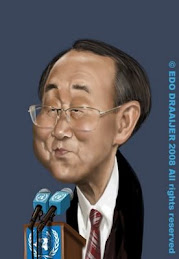












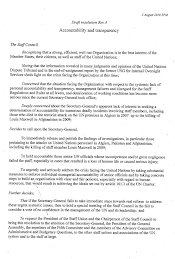

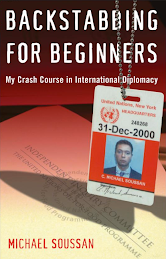
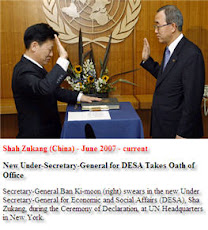

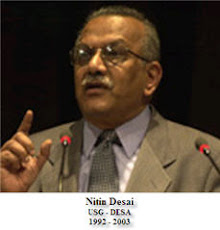
No comments:
Post a Comment